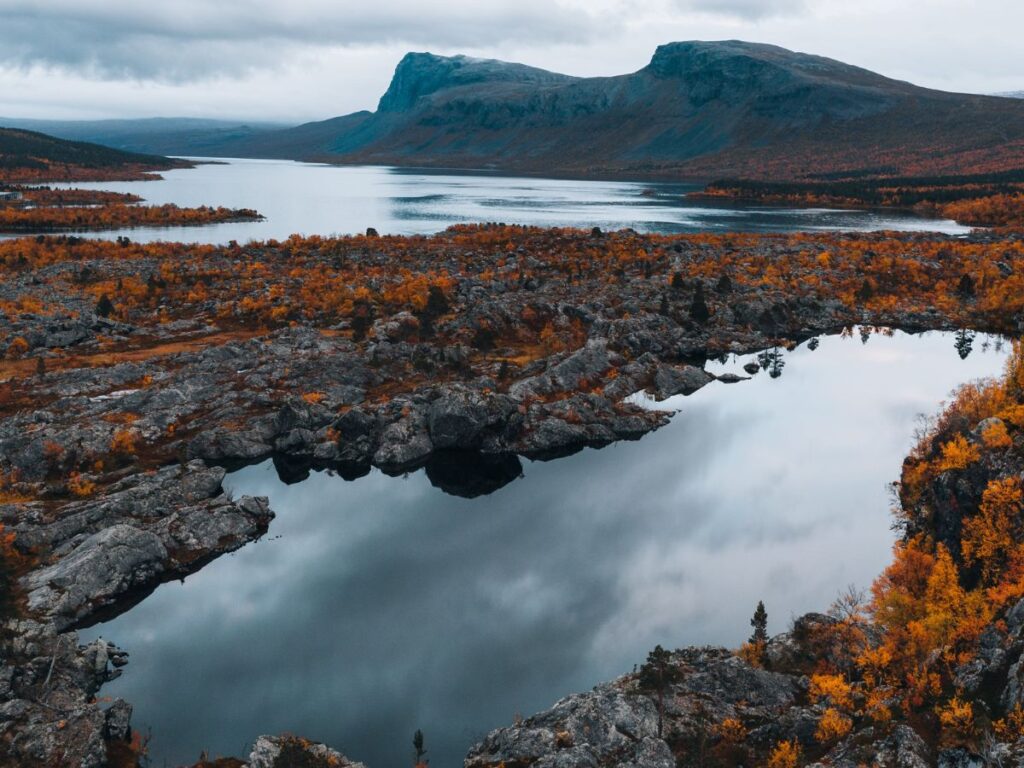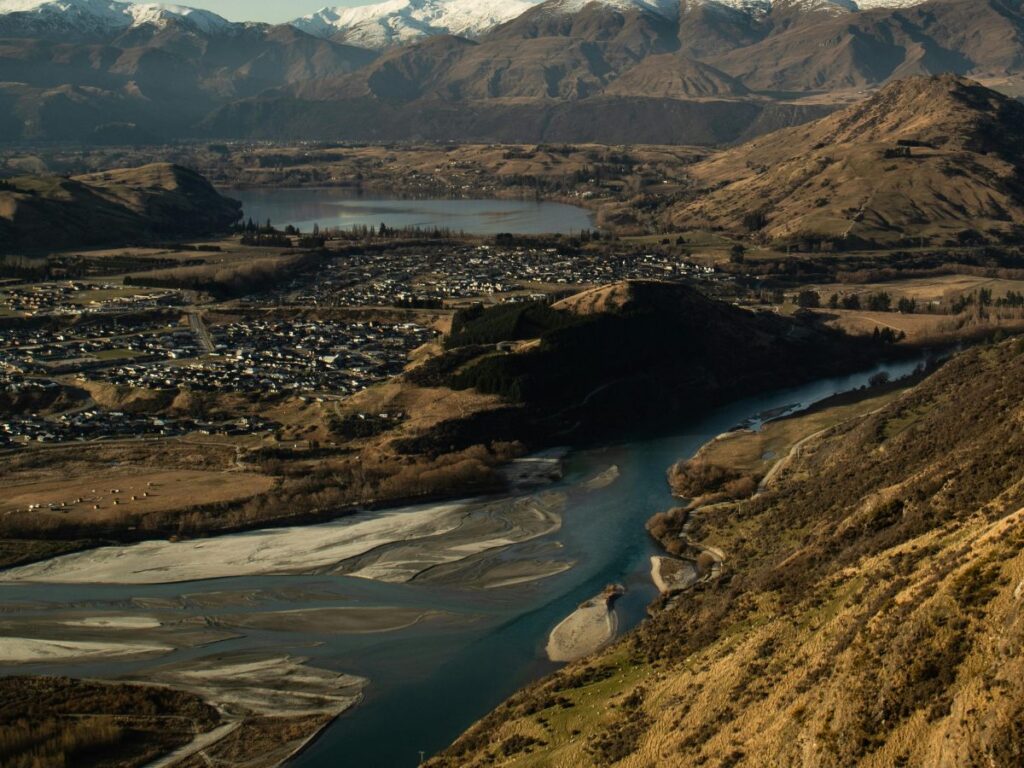Nestled in the heart of Yosemite National Park, the Gaylor Lakes Trail offers an unforgettable journey through some of the most breathtaking landscapes nature has to offer. This hidden gem, a moderate hike that rewards adventurers with stunning views of alpine lakes and rugged mountain peaks, is a must-visit for anyone looking to immerse themselves in the great outdoors. From the moment you set foot on the Gaylor Lakes trailhead, you’re embarking on a path that weaves through picturesque meadows, past the serene waters of the lower Gaylor Lake, and up to elevations that unveil the raw beauty of Yosemite’s high country. Whether you’re an avid hiker or simply someone who appreciates the beauty of nature, hiking to Gaylor Lakes is an experience filled with awe-inspiring vistas and peaceful solitude. Let’s dive into the journey that awaits on the Gaylor Lakes Trail, where every step is a discovery and every view, a story.
Getting There: Gaylor Lakes Trailhead
Embarking on an adventure to the Gaylor Lakes Trail begins with reaching its trailhead, located conveniently at the eastern edge of Yosemite National Park. To find the Gaylor Lakes trailhead, you’ll navigate to Tioga Pass Entrance, which is the highest highway pass in California and a notable landmark marking the gateway to your journey. Once you’ve passed through the entrance station, immediately look for a parking area on your left; this is where you’ll want to leave your vehicle.
The importance of an early start cannot be overstressed. Arriving early not only ensures you find a parking spot in the limited space available but also allows you to enjoy the tranquility of the trail with fewer people. This early start is especially crucial during peak season when Yosemite sees a significant influx of visitors.
Before you set out, be mindful of the park entrance requirements. All visitors to Yosemite National Park are required to pay an entrance fee, which can vary depending on the type of pass you purchase. Options include a single-vehicle pass, which is valid for seven days, or an annual pass for those who plan frequent visits. Remember, these fees are used to maintain and preserve the park’s natural beauty for future generations.
As you prepare to explore the Gaylor Lakes Trail, remember these key points to ensure a smooth start to your hiking adventure. With the majestic beauty of the high Sierra awaiting, the Gaylor Lakes trailhead is your first step into a world of natural wonders.

Trail Overview
The Gaylor Lakes Trail offers an enriching hiking experience that showcases the diverse beauty of Yosemite National Park’s high country. This trail is a breathtaking journey through some of Yosemite’s most picturesque landscapes, providing hikers with a unique blend of natural splendor, from expansive meadows dotted with wildflowers to rugged mountain vistas. The serenity of hiking to Gaylor Lakes, coupled with the stunning panoramic views at every turn, makes this trail a must-visit for nature lovers and outdoor enthusiasts alike.
Spanning approximately 3.5 miles round trip, the trail challenges hikers with an elevation gain of about 1,000 feet. This hike is rated as moderate in difficulty, making it accessible to those with a reasonable level of fitness while still offering enough of a challenge to be rewarding. The initial ascent is the most strenuous part of the hike, but it quickly pays off with breathtaking views that encompass the lower Gaylor Lake and the vast, scenic beauty of the Sierra Nevada.
What sets the Gaylor Lakes Trail apart from other trails in Yosemite is its relatively uncrowded path, leading to pristine alpine lakes nestled in the high Sierra. Unlike the more frequented trails of Yosemite Valley, Gaylor Lakes offers a sense of solitude and untouched wilderness, allowing hikers to immerse themselves fully in the natural beauty around them. This trail presents a unique opportunity to experience the quieter, more secluded side of Yosemite, making it a fantastic choice for those seeking peace and tranquility amidst the park’s stunning landscapes.
What to Expect: Terrain and Difficulty
When setting out on the Gaylor Lakes Trail, hikers can anticipate traversing through a variety of terrains that showcase the diverse beauty of Yosemite National Park. The journey begins with a well-defined path that quickly introduces you to the initial challenge: a steep ascent. This portion of the trail, while demanding, rewards your efforts with expansive views that set the tone for the adventure ahead.
As you progress, the trail reveals a tapestry of terrain types, from rugged rocky paths that demand careful footing to serene forested areas brimming with the sounds and scents of coniferous trees. Open meadows occasionally unfold before you, offering picturesque landscapes dotted with wildflowers and the opportunity to spot wildlife in their natural habitat. These meadows also provide a stark contrast to the rocky sections, emphasizing the trail’s diverse ecological zones.
The difficulty level of the Gaylor Lakes Trail is generally rated as moderate, primarily due to the steep initial climb and the trail’s elevation. The path becomes less strenuous after the first ascent, but the presence of rocky sections and uneven terrain throughout requires a degree of physical fitness and hiking experience. The trail’s highest points offer not only the most stunning views but also present the challenge of hiking at higher elevations. The Gaylor Lakes elevation reaches over 10,000 feet at its highest point, which can affect the difficulty of the hike due to the thinner air at altitude. This elevation factor is significant for those not accustomed to high-altitude hiking, as it can lead to quicker fatigue and necessitates a slower pace to adjust to the lower oxygen levels.
Hikers embarking on this trail should be prepared for the physical demands it presents, taking into consideration the combination of steep sections, varied terrain, and the high elevation. However, the beauty and tranquility of the Gaylor Lakes area, with its unparalleled views and pristine natural surroundings, make every step worthwhile, offering a rewarding experience for those ready to take on the challenge.

Landmarks and Highlights
The Gaylor Lakes Trail is peppered with landmarks and natural highlights that captivate the senses and offer memorable experiences at every turn. Among these, the lower Gaylor Lake stands out as a serene, picturesque destination that embodies the tranquil beauty of Yosemite’s high country. This alpine lake, with its crystal-clear waters reflecting the surrounding granite peaks, offers a perfect spot for reflection and relaxation. It’s also an ideal location for photography, capturing the essence of Yosemite’s wilderness.
Beyond the lower Gaylor Lake, hikers will find themselves enchanted by the Great Sierra Mine historic site, a reminder of the area’s rich history during the silver mining boom. Exploring this area provides a glimpse into the past and offers a unique contrast to the natural beauty that surrounds it.
The flora and fauna along the Gaylor Lakes Trail add layers of interest and wonder to the hiking experience. The meadows along the path burst with wildflowers in the spring and summer, showcasing a vibrant array of colors. The forested sections are home to towering pines and cedars, creating a canopy that offers shade and a sense of solitude. Wildlife is abundant, with the possibility of spotting mule deer, pikas, and if you’re fortunate, the elusive Sierra Nevada bighorn sheep. Birdwatchers will also delight in the variety of birds that call this area home, from the melodious calls of the mountain bluebird to the swift flight of the Clark’s nutcracker.
Photography enthusiasts will find no shortage of subjects to capture, from the panoramic vistas at the trail’s higher elevations to the intimate details of a wildflower or the texture of weathered granite. The best spots for photography often come with the changing light of early morning or late afternoon, when the sun casts a golden hue over the landscape, enhancing its natural beauty. The area around both the lower and upper Gaylor Lakes offers expansive views that are particularly striking at these times, making them a must-visit for those looking to capture the essence of Yosemite’s high country.
Safety and Preparation
Hiking to Gaylor Lakes is an extraordinary experience, offering breathtaking views and the serenity of Yosemite’s high country. However, safety and preparation are paramount to ensure a memorable and secure adventure. Here are essential tips and recommendations for anyone planning to explore the Gaylor Lakes Trail.
Essential Safety Tips
- The high elevation of the Gaylor Lakes area can lead to sudden weather changes. Prepare for cool temperatures and potential afternoon thunderstorms, especially in summer. Check the weather forecast before you start your hike and be ready to turn back if conditions deteriorate.
- While wildlife sightings can enhance your experience, it’s important to maintain a safe distance from animals. Never feed wildlife, as human food can harm animal health and alter natural behaviors. Store snacks and food properly to avoid attracting bears and other animals.
Recommended Gear and Supplies
- Water: Hydration is crucial, especially at higher elevations where the air is thinner. Bring at least 2 liters of water per person, and more if you plan to hike on warmer days or extend your trip.
- Sun Protection: The sun’s rays are more intense at higher elevations. Wear a broad-spectrum sunscreen, sunglasses, and a hat to protect against sunburn and UV exposure.
- Appropriate Clothing: Dress in layers to adjust to changing temperatures. Include a lightweight, waterproof layer in case of unexpected rain.
- Navigation Tools: While the Gaylor Lakes Trail is well-marked, carrying a map, compass, or GPS device is wise for safety and to explore with confidence.
- First Aid Kit: Pack a basic first aid kit for minor injuries or emergencies. Include items like bandages, antiseptic wipes, blister care, and any personal medications.
Best Times of Year to Visit: The optimal time to hike the Gaylor Lakes Trail is from late spring through early fall, typically from late June to October, when the trail is mostly snow-free and the weather is favorable. July and August offer the warmest temperatures, wildflower blooms, and the best chance for clear, sunny days. However, these months can also be the busiest. For a quieter experience, consider visiting in September or early October, when the crowds have thinned, and the fall colors begin to emerge.

Environmental Consideration
As you prepare to explore the natural splendor of the Gaylor Lakes Trail, it’s crucial to remember our collective responsibility to protect and preserve the stunning landscapes of Yosemite National Park. Embracing Leave No Trace principles is essential for ensuring that the beauty of the trail and its surroundings remains unspoiled for future generations to enjoy.
Proper planning can minimize the impact on the environment. This includes understanding and respecting the area’s regulations, preparing for varying weather conditions, and ensuring you have the necessary equipment to hike responsibly. To protect the delicate ecosystem around Gaylor Lakes, hikers are encouraged to stay on marked paths and avoid creating new trails. The vegetation and soil alongside the trail are highly susceptible to erosion and damage from foot traffic.
Pack out all trash, leftover food, and litter. Biodegradable waste, such as fruit peels or seeds, can still take years to decompose at high elevations, so it’s crucial to carry all waste with you until it can be disposed of properly. Preserve the past and the present. Leave rocks, plants, archaeological artifacts, and other natural objects as you find them. Avoid picking flowers or moving rocks, as even small changes can have a significant impact on the habitat. In many areas of Yosemite, including the Gaylor Lakes Trail, campfires are restricted or prohibited. Use a lightweight stove for cooking and enjoy the natural night sky without the impact of a fire.
Observe wildlife from a distance and do not follow or approach them. Feeding animals alters their natural behaviors and can harm their health. Respect other trail users and protect the quality of their experience by keeping noise levels down and yielding to others on the trail.
Protecting the Surrounding Ecosystem: Staying on marked paths is not just about following the rules; it’s about safeguarding the fragile ecosystem that makes the Gaylor Lakes area so unique. The meadows, lakesides, and alpine environments are home to a variety of plant and animal species that rely on the integrity of their habitat to thrive. By sticking to designated trails, hikers help preserve the natural terrain, prevent soil erosion, and ensure that the landscape remains as pristine and beautiful as it is today.
Key Takeaways
- Gaylor Lakes Trail offers a unique and serene hiking experience within Yosemite National Park, providing stunning views of alpine lakes and rugged Sierra peaks.
- The trailhead is easily accessible from the Tioga Pass Entrance, with parking available nearby. Early arrival is recommended to secure parking and enjoy a quieter trail experience.
- The hike is rated as moderate in difficulty, covering approximately 3.5 miles round trip with an elevation gain of about 1,000 feet. The initial steep ascent is the most challenging part, but it rewards hikers with breathtaking vistas.
- Diverse landscapes and natural beauty abound, including meadows, forests, and the crystal-clear waters of lower Gaylor Lake. Hikers can also explore historical sites like the Great Sierra Mine.
- Wildlife and wildflowers enhance the trail’s beauty, offering opportunities for spotting animals and enjoying seasonal blooms. Photographers will find ample subjects to capture, especially during early morning or late afternoon light.
- Preparation and safety are crucial, with essential gear including water, sun protection, appropriate clothing, and a basic first aid kit. Awareness of weather conditions and altitude effects is important for a safe hike.
- Environmental preservation is a key focus, with hikers encouraged to follow Leave No Trace principles and stay on marked paths to protect the trail and its surroundings for future generations.
FAQs
- What is the difficulty level of the Gaylor Lakes Trail?
The trail is rated as moderate due to its steep initial ascent and the high elevation. - How long does it take to hike the Gaylor Lakes Trail?
The hike typically takes around 3 to 5 hours, depending on pace and stops for enjoying the scenery. - Do I need a permit to hike the Gaylor Lakes Trail?
No permit is required for day hikes, but park entrance fees apply. - What is the best time of year to hike to Gaylor Lakes?
Late spring through early fall (late June to October) offers the best conditions for hiking. - Can I bring my dog on the Gaylor Lakes Trail?
Pets are not allowed on the trail to protect wildlife and the natural environment. - Is there parking available near the Gaylor Lakes trailhead?
Yes, there is a parking area near the trailhead, but it’s recommended to arrive early as spaces fill up quickly. - Are there any restrooms at the Gaylor Lakes Trail?
There are no restroom facilities on the trail itself; plan to use facilities at the trailhead or nearby areas. - Is the Gaylor Lakes Trail suitable for children?
Yes, it can be suitable for children who are accustomed to hiking and can handle the moderate difficulty level. - Are campfires allowed on the Gaylor Lakes Trail?
Campfires are generally prohibited to protect the area; use a portable stove for cooking. - Can I fish in Gaylor Lakes?
Fishing is allowed, but check current regulations and ensure you have the appropriate California fishing license. - How should I prepare for the elevation on the Gaylor Lakes Trail?
Acclimate to higher elevations before your hike, stay hydrated, and pace yourself to prevent altitude sickness.
